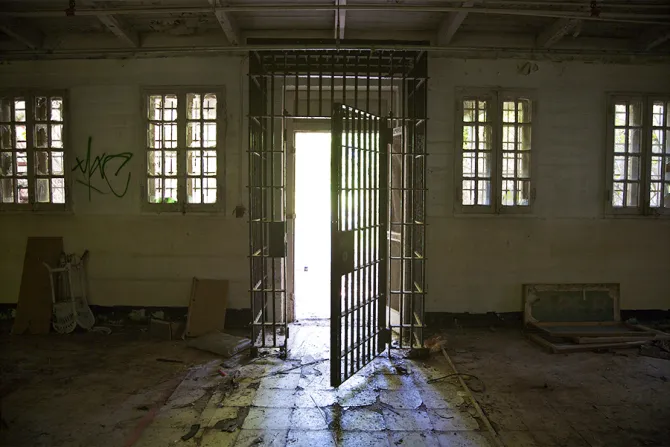Washington, D.C., Dec 20, 2016 / 17:16 pm
With the number of displaced persons at its highest ever recorded – more than after World War II – troubling stories have surfaced of the U.S. disobeying its own protocol in detaining or removing asylum-seekers.
"We are facing a crisis at the border," Kristina Arriaga, a member of the U.S. Commission on International Religious Freedom (USCIRF), told CNA.
"But as a result of DHS' flawed policies," she said, asylum-seekers "are being returned to their country of origin without the United States assessing whether these are credible fears."
The commission published a new report this summer, examining "Barriers to Protection: the treatment of asylum-seekers in expedited removal."
"Those seeking refuge from persecution deserve to be treated with dignity and should not be confined in prison-like conditions simply for seeking freedom and protection in the United States," Fr. Thomas J. Reese, S.J., chair of the commission, stated on the release of the report.
The U.S. Commission on International Religious Freedom is a bipartisan panel created by Congress in 1998 to promote religious freedom in U.S. foreign policy, advise the State Department, and document global human rights abuses.
In 2005, the commission issued its initial "Report on Asylum Seekers in Expedited Removal," reviewing the entire process under the Department of Homeland Security by which persons who enter the U.S. without identification either establish a claim of asylum or are quickly deported to their country of origin.
The report found "serious flaws" in the whole process. To obtain asylum, someone who enters the U.S. must "establish a credible fear of persecution or torture" if they will be returned to their home country.
However, the commission's 2005 report found that, in many cases, the interview to determine asylum was not followed according to protocol. Some people who were eligible for entry into the U.S. were sent home. Others were put in detention centers with poor conditions.
Systemic problems found in 2005 persist today, the current report says. According to field research and public information reviewed between 2012 and 2015, the commission found cases of abuse within the system that undermined the asylum process, and "most of USCIRF's 2005 recommendations had not been implemented."
Interviews of asylum-seekers by Customs and Border Protection agents were problematic, the report found. The asylum process is a delicate one. Someone fleeing violence and coming to another country where they are unfamiliar with the laws and language may not easily be able to establish a "credible fear" if they are sent back to their country of origin.
In one case in the report, an asylum-seeker said that in an interview to establish "credible fear," they were not even asked if they were afraid to return home. The agent still wrote down that they were not afraid to be sent back home.
That same asylum-seeker "also said he had a letter from a helpful police officer in El Salvador saying he had been threatened by gang members, which he said the agent told him he would have to present to the asylum officer but then took and kept," the report added.
In another case, "a Bangladeshi asylum seeker told USCIRF he was turned away at a port of entry and told to seek asylum in Mexico."
Chinese asylum-seekers were met with skepticism by Border Patrol agents "because they could not name the church they attended," the commission noted. "The official did not know that many Chinese Christians worship at home."
One woman told Border Patrol that she was indeed afraid to return to Guatemala and was not coming to the U.S. to find work. However, her case read the opposite – she had come looking for work and was not afraid to be sent back home.
(Story continues below)
"Asylum officers reported to USCIRF that this was a common occurrence," the report added. "They also said that they were seeing many forms with identical answers, and others with clearly erroneous ones."
"Border Patrol personnel oftentimes are truly, truly doing the best they can," Arriaga told CNA. "They just don't have the equipment, the tools, or the training to do this properly."
Even if asylum-seekers were deemed by officials to have a "credible fear" of returning home, they were often placed in detention centers until a federal immigration court decided their case.
"USCIRF found that asylum seekers continue to be detained under inappropriate penal conditions before their credible fear interviews, and in some cases, even after being found to have a credible fear," the report said.
The conditions of the detention centers resembled that of prisons, it added. There is no privacy for men, women, and children there, Arriaga said, and "most importantly" there is no "access to legal assistance."
"We see children suffering depression, tremendous anxiety," she continued, and all this could be avoided if the Department of Homeland Security began putting into practice the commission's 2005 recommendations, as well as its own 2009 policies. "These people would not be held for such a lengthy amount of time," she said.
"How we treat people who come to our borders says a lot about who we are as Americans," Arriaga continued.
"No one is arguing let everyone in without screening. We owe them, simply out of human dignity, the possibility of making their case at the border. And that is not being given to the people that come to the border."
This article was originally published on CNA Aug. 4, 2016.



